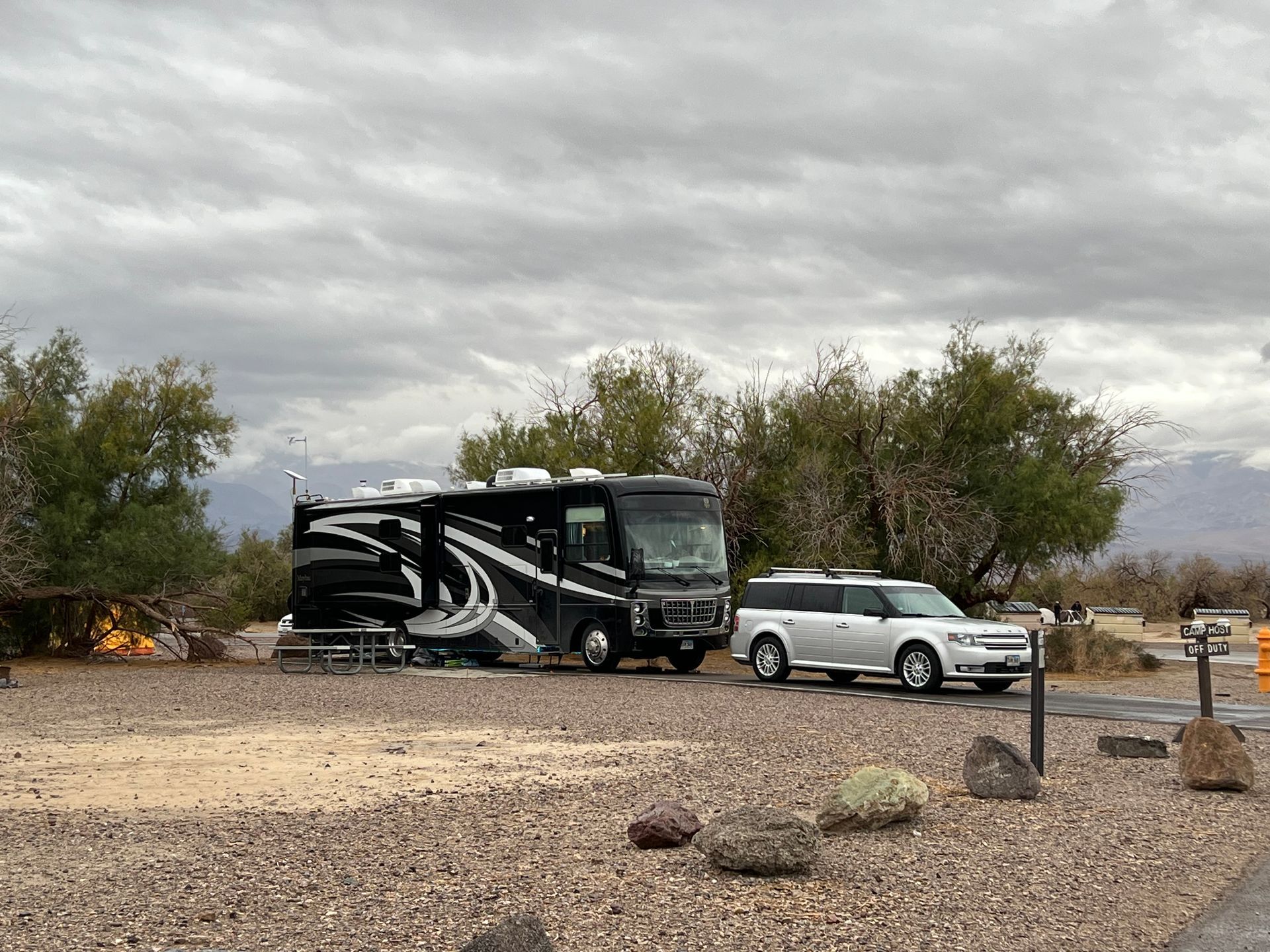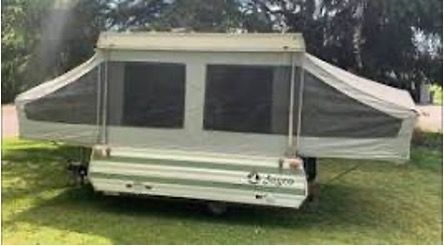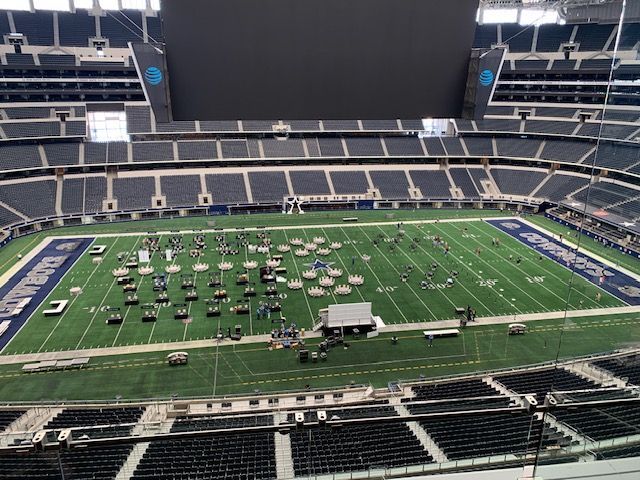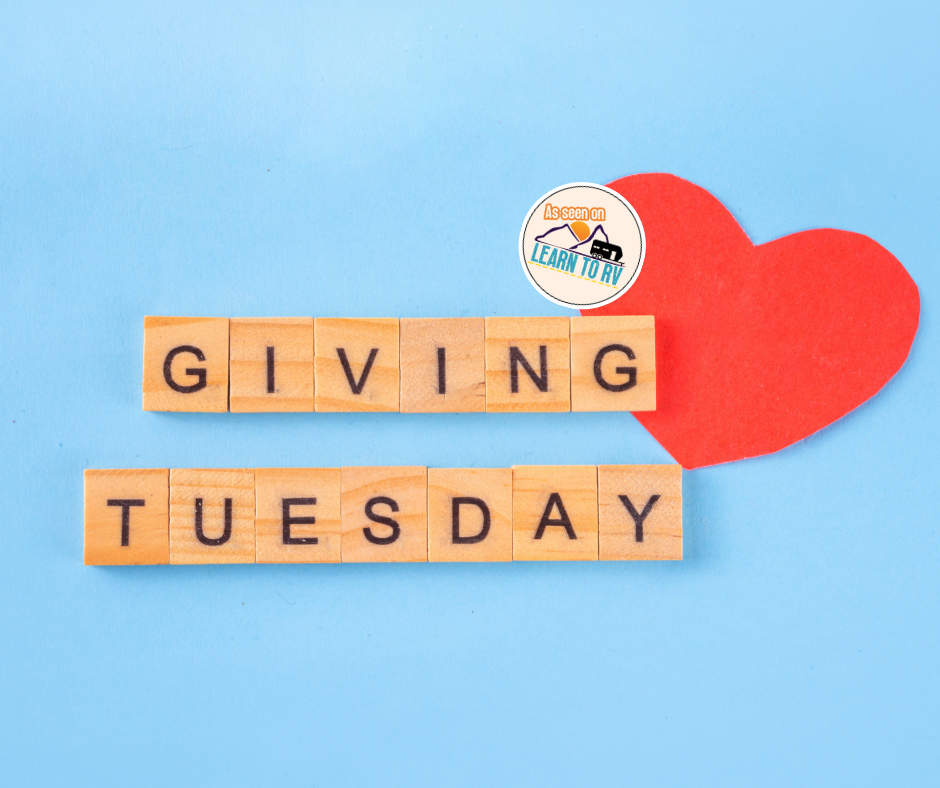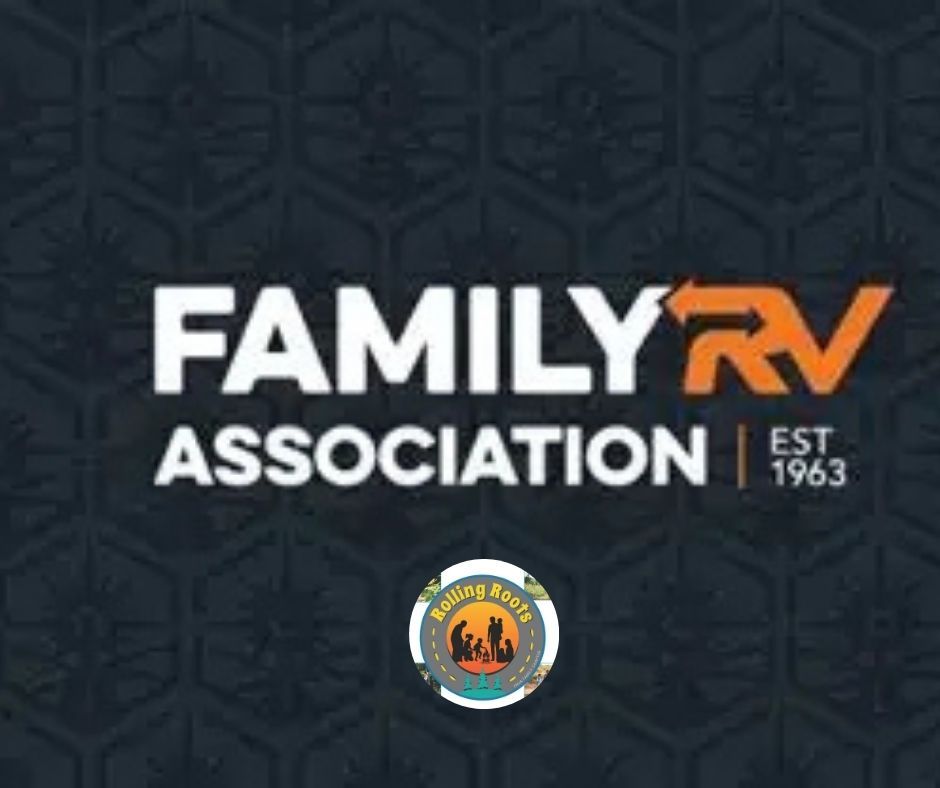When the Forecast Says Teens: Our Crash Course in Cold Weather RV Living
Michael Gardner • August 27, 2025
Real-world RV winter prep without campground hookups.
We had been snowbirding in the south when we found out we needed to head to Wisconsin for a sick brother. Temperatures were forecast down in the low teens for the next few weeks. We hadn’t experienced anything like this before, so we started dreaming up options and planning accordingly.
Our home base in Illinois was halfway between the Gulf and Wisconsin, so we headed that direction while making plans and ordering some materials. Our motorhome (Tiffin gasser) has storage doors that hang down below the edge of the storage boxes. That creates a great space to attach tarp material with tape. It would also allow us to access our storage areas. Thus, I ordered a couple of rolls of no-residue tape. I was going to have to attach tarp all around the RV and I didn’t want the residue that duct tape often leaves. When we got to home base, we stayed in a nearby campground and hit the hardware store. I had measured and estimated the square footage of tarp and we bought the heaviest vinyl tarp we could find. I cut up strips to go around the RV – labeling each one as to where it went. The sides were easy, but the front, rear and wheel wells required much taller pieces of tarp. Once cut, they were then folded and stashed in install order in our truck. We have two slides – we figured we could get along leaving the main slide in, but not the bedroom slide. I purchased enough pink 1” foam insulation to go around the slide sides and cut it to fit. I also purchased ratchet straps to go all the way around the slide to hold the foam in place. This foam not only insulated the sides of the slide but pressed up against the slide seals, helping to close off the air leaks that always exist around slides.
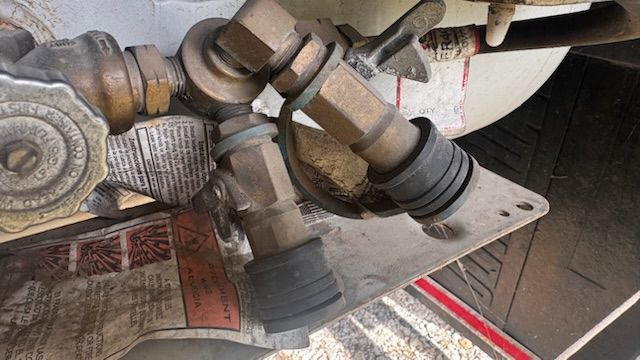
Now for heat. I had also ordered a couple of the attachments and hoses that allow me to hook up an external propane take to the propane system. We normally carried one tank for our propane fire pit and I grabbed a spare tank I had at home. This allowed me to not worry about my propane usage for heating as I could simply refill the external tanks as they emptied.
I knew I would have access to one or two 15 or 20 amp circuits from the garage, so I added a 1500 watt heater from the garage to the small heater I used in my water bay for times when temperatures got near freezing. I put the extra heater under the RV, set on low just to add some heat below the RV. Between the skirting and the heater, the temperature down there stayed just above freezing despite the wind and outside temp as low as 14. But I also knew we were going to have to monitor our power usage carefully. I did have solar on the roof which helped somewhat on keeping the batteries charged.
We also had an electrical heater (with thermostat) for the bedroom which we would run on low. It ran through the Inverter as did the heater in the water bay and the battery warmers. I could limit the current the inverter drew from AC input, so it would use the batteries as a source under higher loads.
Other sources of possible heat were our engine and generator. I had purchased some wrap around fiberglass insulation and planned to let the exhaust from both of these engines exit the tarp through holes, wrapped in insulation. Thus, we could run the engine or the generator for short periods which would vent the heat below the motorhome inside our skirting as a backup plan. In the end, we didn’t have to run the motorhome engine and only needed to run the generator a couple of times for a while to charge up the batteries.
We have lithium batteries which replaced the lead acid shortly after we bought the RV. Lead acid battery compartments are well vented, and our battery compartment was wide open to the outside temperatures. I ordered a couple of 80-watt battery warmers which were just the right size to go all the way around the four batteries and connected them through a small thermostat which kicked in around 40 degrees. Then we sealed the battery compartment off from the outside. I already had a remote temperature sensor installed next to the batteries so I could monitor their temperature. I had similar sensors in both water bays so I could make sure they were not freezing.
The front of the RV had never been very well sealed. We bought a spring-loaded curtain rod and a couple of heavy blackout curtains and blocked off the front of the RV just behind the front seats. With the curtain, temperatures up there dropped to the 50’s and blocking that off I believe made it easier to keep the rest of the RV warmer.
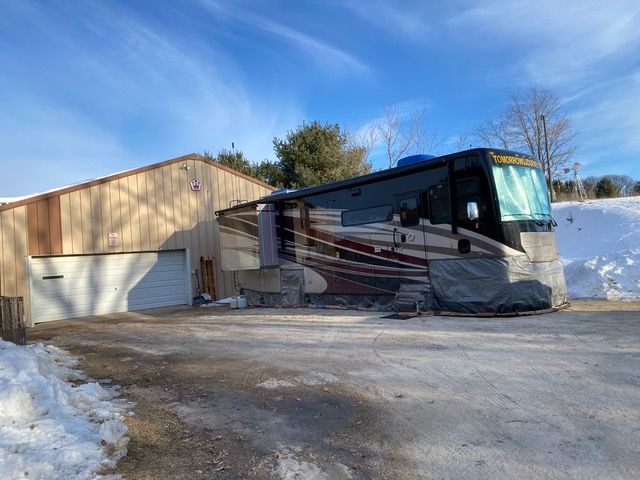
Once we were up there, it took two days to get everything in place – fortunately the first night was only just below freezing. We needed to anchor the skirting to the ground – we choose to raid the firewood storage of which there was plenty to hold the edges down. I had made sure to leave the skirting over foot longer than just reaching the ground for this purpose. This would be less important if you used rigid skirting, but with the tarp, we needed something to seal against the ground and keep it in place with the wind.
For us, this was a good workable solution for a several weeks stay. I think if we were going to go all winter, I’d consider rigid foam, but for us it would be quite difficult to mate the foam up to the RV and would still require a lot of tape; much more than did the tarp. . We had access to a bathroom and shower, so water usage in the RV wasn’t a problem. We did refill the external propane tanks one time. It would have been much more difficult to stay warm without some AC power from the garage but would have been much easier if we had 50-amp hookups in a campground
Other blogs you might like...
